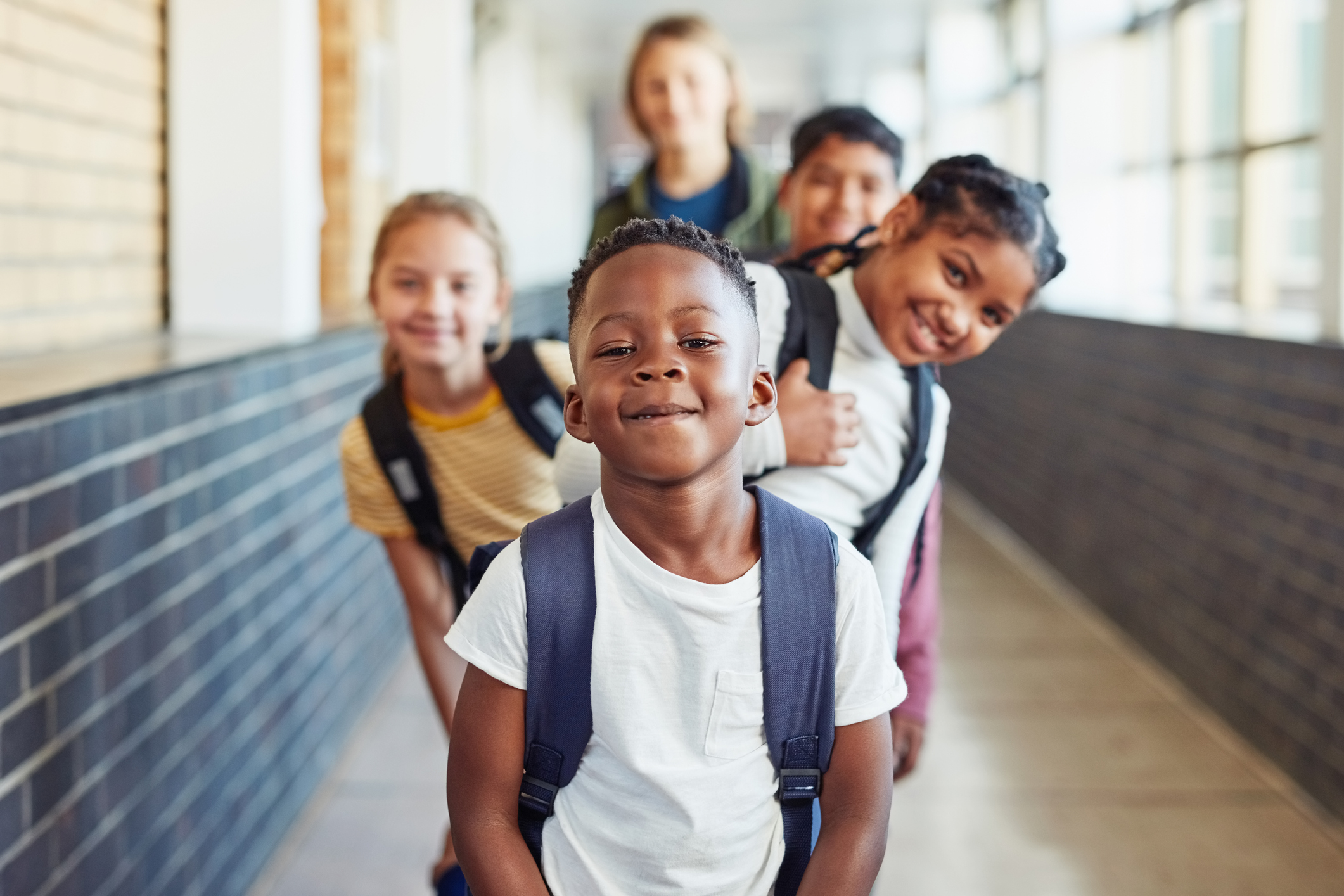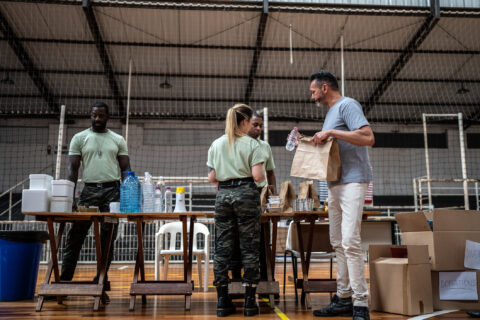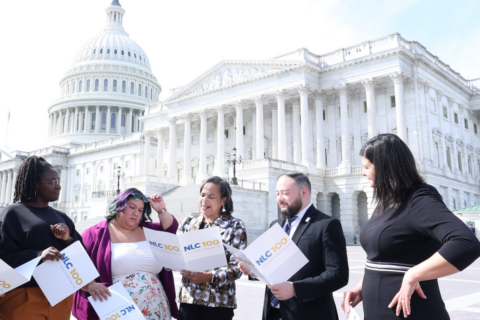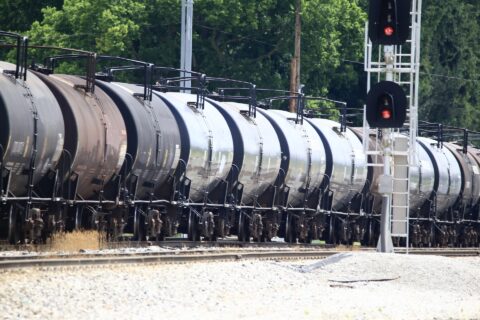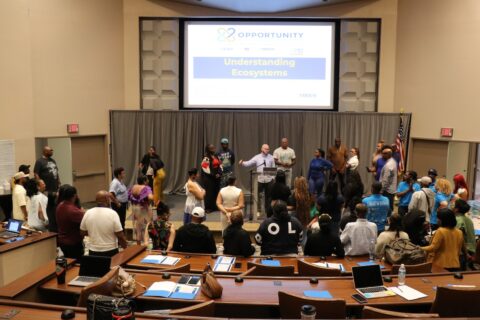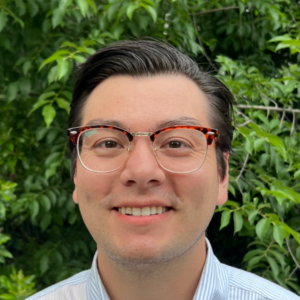Who holds the responsibility of creating public safety? Elected leaders across city, state, and federal levels are receiving urgent calls to act against violence that has tragically taken too many lives. On January 25, 2024, the White House held a town hall to convene school principals to highlight the use of safe firearm storage as a new preventive resource for school administrators to disseminate to parents, caregivers, and families. First Lady Jill Biden, U.S. Education Secretary Miguel Cardona, and White House Office of Gun Violence Prevention Director Stefanie Feldman along with her team, which includes longtime gun violence prevention advocates Greg Jackson and Rob Wilcox, released the prevention tool to empower staff within the school system to protect kids from firearm-related death and injury.
The resource is a communication guide that parents, families, and their communities can use to draw attention to the lifesaving potential of firearm-safe storage. City leaders, alongside school administrators, can utilize this resource within their local school systems as a step toward safer communities. While protective measures are proven to effectively get ahead of violent incidents, a comprehensive local public health approach will ensure it is addressed through sustained multi-sectoral collaborative strategies.
During the town hall, principals shared the fear and burden of violence in schools as well as the experiences of their peers who have lived through traumatic exposure to shooting tragedies. Safety in the environments we live, learn, work, play, eat, worship, and grow directly impacts both life outcomes and capacity to reach one’s full potential. The absence of safety also has lasting effects on the mental health and well-being of all who are exposed either directly and/or indirectly.
The Biden-Harris Administration has taken some historic actions to address pressing public safety needs including the historic passing of Bipartisan Safer Communities Act (BSCA), investments through the American Rescue Plan Act, and the establishing of the first-ever White House Office for Gun Violence Prevention while continuing to work with Congress for additional action. Unprecedented federal funding has been disbursed to ensure safety and overall wellbeing in communities.
Collaborative Approaches Are Essential
The creation of safer communities – in schools, neighborhoods, and both public as well as private spaces must be a collaborative effort across all sectors. As demonstrated by lessons learned through our Municipalities Reimagining Community Safety (MRCS) initiative, public safety is an all-hands-on-deck effort that is inclusive of, but not limited to:
- Local Elected Officials
- City Leaders/Departments
- Community
No one person or entity can achieve public safety alone. Emerging community safety policies, programs, and strategies must also consider innovative solutions across the socio-ecological model levels that address factors at the individual, relationship, community, and societal levels that are at interplay when addressing public health issues.
Promising Example: Baltimore’s School-Based Violence Intervention Pilot
Baltimore is one of five cities in the MRCS initiative working to build a community safety ecosystem that uniquely includes schools and students. The Baltimore city Mayor’s Office for Neighborhood Engagement and Safety (MONSE) is keen on addressing violence as a public health crisis that requires the development of holistic solutions. Mayor Brandon Scott’s comprehensive plan centers three pillars: 1) Public Health Approach to Violence, 2) Community Engagement and Intera-Agency Coordination, and 3) Evaluation and Accountability. These pillars elevate strategies that address safety alongside residents and goes further to include a school-based violence intervention strategy.
As shown by best practices, those closest to an issue must be centered when creating solutions. The city of Baltimore has developed a pilot to work with four high schools to prevent conflict among students in school that could escalate and/or potentially spill over into communities through programming that changes norms about violence. The project’s focus is to create a positive school and community climate by raising awareness about youth violence and equipping students with the necessary skills as well as tools to navigate them.
Building in schools into a city’s overall community violence intervention ecosystem allows for multiple impact points and promising opportunities to make sustainable change.
CALL TO ACTION
As federal leaders work on long-term solutions around addressing the issue of safety, local leaders can do their part to call on their schools and youth serving organizations to take part in effective preventive measures. Municipalities can participate in an action-oriented campaign led by students known as the annual National Youth Violence Prevention Week (NYVPW). During the week of April 22-26, 2024, cities of all sizes can come together to raise awareness around ways to create safer schools and beyond. NYVPW is an initiative of Students Against Violence Everywhere (SAVE) Promise Club in partnership with Sandy Hook Promise, a national organization founded and led by family members who have lost loved ones to senseless violence at an elementary school in December 2012. The initiative is a courageous act to transform tragedy into action that can be taken by all in schools, homes, and communities. NYVPW encourages all to join within their capacities with tailored suggested actions. A daily toolkit is also provided for schools and youth interested in participating.
The federal investments and pursuit for continued action is promising. While more action is underway, municipalities must elevate the notion that safety for all is a shared value and the responsibility of creating it must be carried by everyone. Both short-term and long-term solutions are needed. We urge all municipalities to engage with their youth at schools, communities, and homes to partake in this upcoming NYVPW and tag #NYVPW and @leagueofcities.
Connect
To connect with other local leaders working to find strategies to effectively communicate data, strategies and polices around crime and safety, contact NLC’s Justice Initiatives team.
